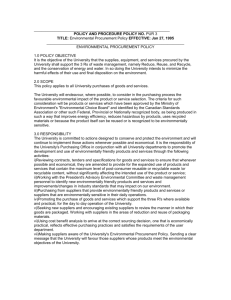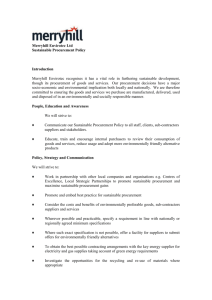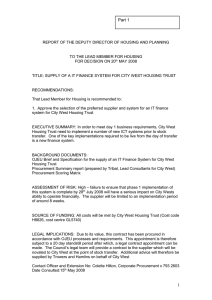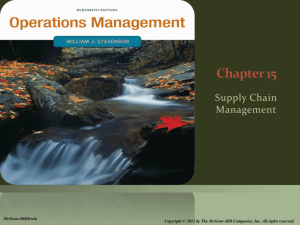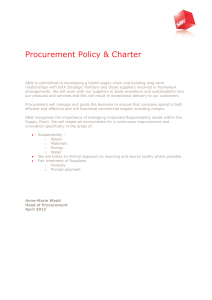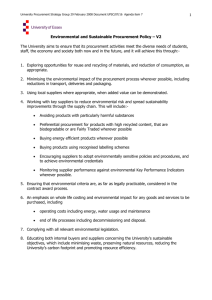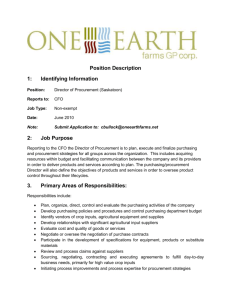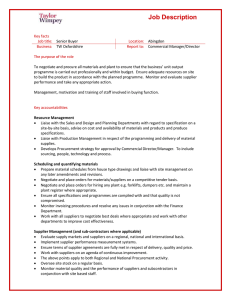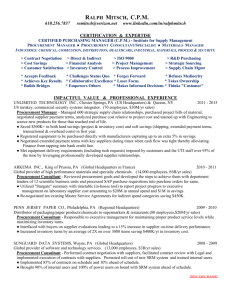Sustainable procurement policy
advertisement
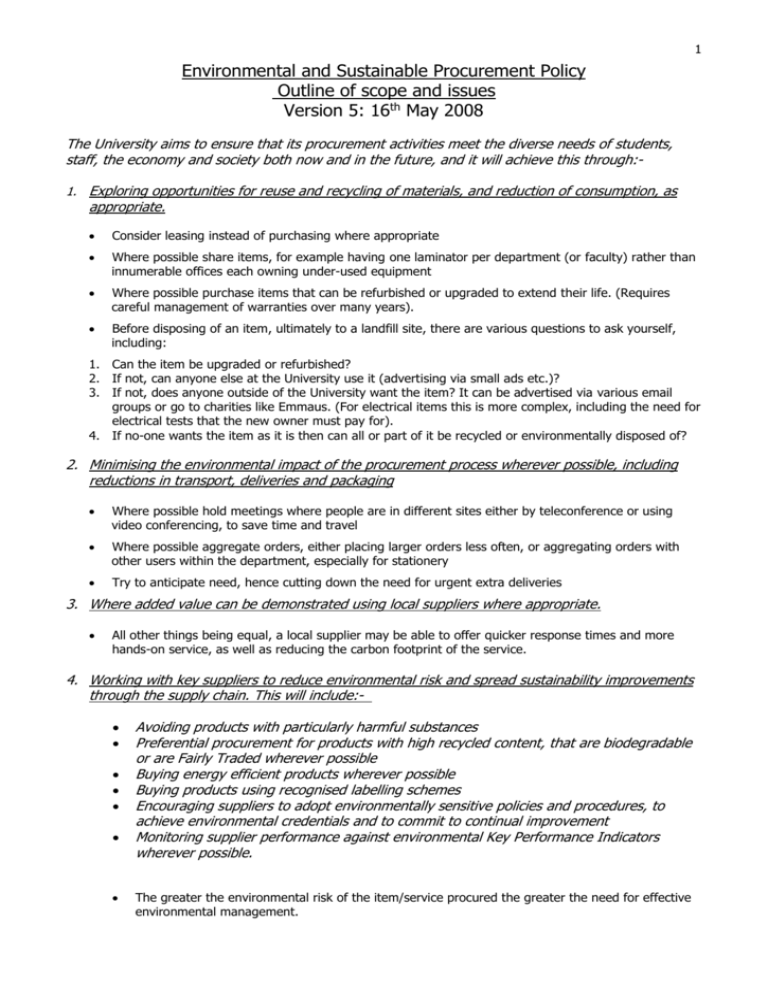
1 Environmental and Sustainable Procurement Policy Outline of scope and issues Version 5: 16th May 2008 The University aims to ensure that its procurement activities meet the diverse needs of students, staff, the economy and society both now and in the future, and it will achieve this through:1. Exploring opportunities for reuse and recycling of materials, and reduction of consumption, as appropriate. Consider leasing instead of purchasing where appropriate Where possible share items, for example having one laminator per department (or faculty) rather than innumerable offices each owning under-used equipment Where possible purchase items that can be refurbished or upgraded to extend their life. (Requires careful management of warranties over many years). Before disposing of an item, ultimately to a landfill site, there are various questions to ask yourself, including: 1. Can the item be upgraded or refurbished? 2. If not, can anyone else at the University use it (advertising via small ads etc.)? 3. If not, does anyone outside of the University want the item? It can be advertised via various email groups or go to charities like Emmaus. (For electrical items this is more complex, including the need for electrical tests that the new owner must pay for). 4. If no-one wants the item as it is then can all or part of it be recycled or environmentally disposed of? 2. Minimising the environmental impact of the procurement process wherever possible, including reductions in transport, deliveries and packaging Where possible hold meetings where people are in different sites either by teleconference or using video conferencing, to save time and travel Where possible aggregate orders, either placing larger orders less often, or aggregating orders with other users within the department, especially for stationery Try to anticipate need, hence cutting down the need for urgent extra deliveries 3. Where added value can be demonstrated using local suppliers where appropriate. All other things being equal, a local supplier may be able to offer quicker response times and more hands-on service, as well as reducing the carbon footprint of the service. 4. Working with key suppliers to reduce environmental risk and spread sustainability improvements through the supply chain. This will include: Avoiding products with particularly harmful substances Preferential procurement for products with high recycled content, that are biodegradable or are Fairly Traded wherever possible Buying energy efficient products wherever possible Buying products using recognised labelling schemes Encouraging suppliers to adopt environmentally sensitive policies and procedures, to achieve environmental credentials and to commit to continual improvement Monitoring supplier performance against environmental Key Performance Indicators wherever possible. The greater the environmental risk of the item/service procured the greater the need for effective environmental management. 2 Where possible interact with regular suppliers to encourage them to improve their environmental credentials, eg. by using less packaging, or by working towards ISO14001 certification. 5. Ensuring that environmental criteria are, as far as legally practicable, considered in the contract award process. Where the environmental dimension of the product or service is relevant to the product/service then the environmental dimension of the item/service, and well as the supplier, can be given an appropriate weighting in the specification and resultant tender/quote evaluation. If necessary seek advice from Central Purchasing. 6. An emphasis on whole life costing for any goods and services to be purchased, including: operating costs including energy, water usage and maintenance end of life costs including decommissioning and disposal For items with high resource demands, such as printers, photocopiers, fridges etc., as well as much research equipment, the initial purchase price is only part of the cost of the item over its whole lifetime. Determine whether the supplier will de-commission the item at the end of its life; if so then ensure the paperwork is filed securely, if not, ensure you don’t pay for a service you will not use. 7. Complying with all relevant environmental legislation. The user/purchaser is responsible for knowing the environmental legislation that is relevant to the particular purchase, whilst Central Purchasing may help with general green purchasing legislation. 8. Educating internal buyers concerning the University's sustainable objectives, which include minimising waste, preserving natural resources, reducing the University’s carbon footprint and promoting resource efficiency. Questions: 1. Can the pooling of resources be incorporated into the new faculty structure, with certain items only kept in faculty offices? 2. How can the tele- and video-conferencing facilities of AVMS be more widely marketed round the University? 3. Given there is much travel to/from Southend and E15, do facilities there need upgrading to make this possible? Is there much interest in such ‘virtual’ meetings, given the positive benefits of genuine face-toface meetings? 4. Many delivery journeys (and a significant amount of money) could be saved if stationery was delivered twice a week instead of the current five times. Are users prepared to accept the diminished convenience of less frequent deliveries? 5. Would users be happy for stationary items to be exchanged at time of ordering with more environmental ones? This can be done automatically, or users given a choice at time of purchase between their original and the ‘green’ alternative. 6. To what extent can monitoring of environmentally risky purchases be incorporated into central controls over procurement available once FMS comes into operation? Dan Satterthwaite

